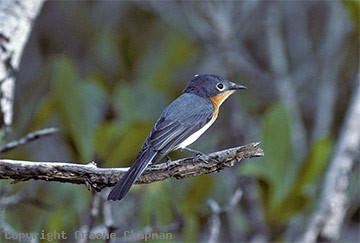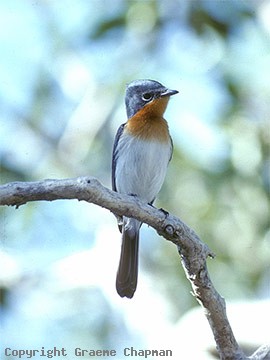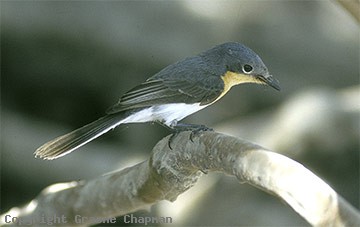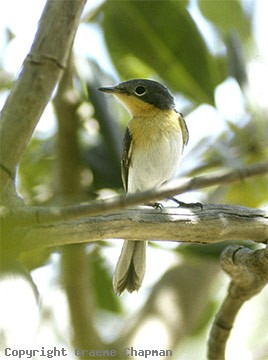
On present knowledge Broad-billed Flycatchers appear to be quite rare on the east coast of Queensland. The known southern limit close to Rockhampton is based on only a few records, mainly from the vast mangrove systems of Shoalwater Bay and also Corio Bay just north of Yeppoon, where they not only occur in mangroves but also in dune scrubs behind the beaches. Between there and Cape York there are few places where they have been recorded - Hinchinbrook Channel, Forrest Beach near Ingham, near Mossman, and Low Isles but there are likely to be many more for such a cryptic species.
The Mossman birds do appear to be resident but very localised. If you really must see them there try contacting Del Richards of Fine Feather Tours - he knows just where to look. Other than that, the nearest place to find them would be the extensive but not very accessible mangroves between Karumba and Borroloola. In the N.T. and Kimberleys they are fairly plentiful and as well as in mangroves they also occur in other broad-leaved habitats like monsoon forest and riverside thickets. In most places, access to extensive mangrove systems without a boat is fairly limited. My favourite spot, where all these photographs were taken, is Barred Creek just north of Broome. There is a large area of white mangroves there, quite easy to walk through (no bottomless mud) at low tide - there are a few negatives such as mosquitoes, getting lost, being caught by the incoming tide (I had to swim for it once) and these days the odd crocodile! It is also a good place to see the Kimberley Flycatcher, currently classed as a form of the Lemon-breasted. Another good spot is out on the boardwalk on the southern side of the carpark at Fogg Dam near Darwin.
Distinguishing Broad-billed Flycatchers from Leadens is not easy - Leaden Flycatchers are quite common birds in mangroves, particularly in eastern Queensland where some people even try to make the males into Satin Flycatchers! The trouble stems from the existing field guides where most of the illustrations are inadequate. The only plate correctly showing the three Myiagras is plate 96 in HANZAB. An adult male Broad-billed is fairly distinctive and very richly coloured - deep blue-grey above and the bib is more saturated in colour than any Leaden. Of course, if you can see the pair of Broad-billed together, problem solved - they look much the same but females and immatures are a pit paler, very "Leaden" like. The graduated tail feathers (see pic 367207) are a good clue but some moulting birds may not conform. The white outer tail feathers of immatures (pic 367204) are diagnostic.
Note that the bill of Leaden Flycatchers (pic 365211) can be just as broad as in a Broad-billed (pic 367209 and 367214D) - the shape of the bill is the crucial clue.




